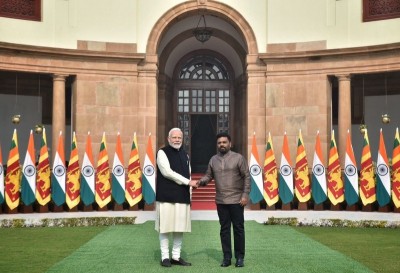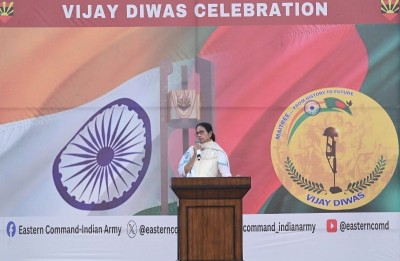
Northeast: Persistent Anxieties
According to partial data compiled by the South Asia Terrorism Portal (SATP), these five Districts have accounted for a total of 310 fatalities (30 civilians, 27 SF personnel, 253 militants) since January 1, 2000, of which at least two (both militants) have been recorded in the current year.
Of these five Districts, Mon accounted for 128 fatalities (six civilians, 13 SF personnel, 109 militants), followed by Tirap with 85 fatalities (one civilian, 11 SF personnel, 73 militants), Tuensung with 61 fatalities (18 civilians, and 43 militants), Changlang with 32 fatalities (five civilians, three SF personnel, 24 militants) and Longding with four fatalities (all militants)
Moreover, nine contiguous Districts - Charaideo (formed on August 15, 2015 by bifurcating Sibsagar), Dibrugarh, Jorhat, Sibsagar, Tinsukia, Kiphere, Longleng, Mokukchang and Zunhebato - around these five districts (Arunachal's Tirap, Changlang and Longding; and Nagaland's Mon and Tuensang) together accounted for at least 635 fatalities (257 civilians, 53 SF personnel, 324 militants) since January 1, 2000. Of these 635 fatalities, at least six (two SF personnel and four militants) have been recorded in the current year.
Among these nine Districts, Tinsukia alone accounted for 302 fatalities (147 civilians, 32 SF personnel, 123 militants), followed by Dibrugarh with 116 fatalities (62 civilians, 8 SF personnel, 46 militants), Zunheboto with 88 fatalities (13 civilians, and 75 militants), Sibsagar with 39 fatalities (13 civilians, four SF personnel, 22 militants),Kiphere accounted for 36 fatalities (seven civilians, five SF personnel, 24 militants), Jorhat with 30 fatalities (12 civilians, four SF personnel, 14 militants), Mokukchang with 22 fatalities (three civilians and 19 militants), and Longleng with two fatalities (both militants).
Overall fatalities in these 14 Districts, since January 1, 2000, thus total 945 (287 civilians, 80 SF personnel, and 578 militants). Total fatalities in the entire northeast during the same period amounted to 12,400 (5,160 civilians, 1,143 SF personnel, 6,097 militants). These fatalities were reported from over 75 Districts in seven States.
This small region around of 14 Districts that constitute the surviving 'hub' of militant activity in the Northeast account for 7.62 per cent of total insurgency-linked fatalities recorded in the seven States of northeast since January 1, 2000.
The five 'hub' Districts - Tirap, Changlang, Longding, Mon and Tuensang Districts - together constitute an area of about 11,601 square kilometres (within a total area of 255,094 square kilometers in the seven insurgency afflicted States of the Northeast) and are sandwiched between the Indian States of Assam and Nagaland and, at the other end, Myanmar. These Districts are strategically important as they facilitate relatively easy infiltration and exfilitration for insurgents operating in the entire northeast from the loosely governed Sagiang Division of neighbouring Myanmar.
These routes have gained enhanced significance for the Nationalist Socialist Council of Nagaland-Khaplang (NSCN-K), United Liberation Front of Asom-Independent (ULFA-I), leading groups behind the militant consortium United National Liberation Front of West East South Asia (UNLFWESA), to mostly to attack the SFs. These routes were traditionally dominated by NSCN-K which has, since its unilateral abrogation of the Cease Fire Agreement on [March 27, 2015] escalated violence against SFs. Further, since coming to power in 2009, the Sheikh Hasina-led Government in Bangladesh has denied safe havens in Bangladesh to Assam-based proscribed groups such as ULFA-I, National Democratic Front of Bodoland-IK Songbijit faction (NDFB-IKS), Kamatapur Liberation Organisation (KLO) and others, making them almost exclusively dependent on Myanmar routes.
According to a February 4, 2017, report, ULFA-I has set up a new 'general headquarters' at Hakiyot, a densely forested area of around 25-30 kilometres inside Myanmar, to replace its existing 'general headquarters' at Vangi. The Hakiyot camp is located opposite Longding [Arunachal Pradesh] and Mon [Nagaland] Districts. The ULFA-I camp was established after the militant Kachin Independence Army (KIA) in Myanmar set a deadline for the outfit to remove its camps from Vangi in the Yunnan province of China, along the Sino-Myanmar frontier. The ULFA-I has now shifted from Arunachal's Changlang and Tirap Districts to Longding, and its cadres now cross over to Longding either directly from Myanmar or through Mon, entering Assam either from Longding into Charaideo and Sivasagar Districts or through other eastern Arunachal Districts. [KIA is the 'military wing' of the Kachin Independence Organisation (KIO), a 'political group' representing ethnic Kachin fighting the Myanmarese Government in northern Myanmar.]
Governments - both at the respective State and central levels - are now planning to concentrate more on these areas for further improvement in the security situation in the northeast.
On March 9, 2017, Arunachal Pradesh Home Minister Kumar Waii disclosed to the State Assembly that the State Government has appointed 1,570 Police personnel, out of 1,949 sanctioned posts, under the Centre's special package for insurgency-hit Tirap, Changlang and Longding Districts. A total of 36 sub-inspectors, 1,530 constables, three head constables (traffic) and one carrier were appointed under the special package. "These posts were sanctioned for opening 11 new Police Stations and upgradation of nine existing Police Stations in the Districts," Waii stated, adding that recruitment for the remaining 379 vacant posts would be carried out 'soon'. Earlier, on February 20, 2017, UHM Rajnath Singh, while announcing a special package for the three Districts, had noted, "The special package for Tirap, Changlang and Longding Districts will also include creation of new posts, purchase of vehicles and equipment for Police,"
There is also a proposal to include the three Arunachal Districts into the fold of the sixth schedule of the Indian Constitution. On March 7, 2017, Chief Minister Prema Khandu, in response to a question asked by former Chief Minister Nabam Tuki, informed the State Assembly that the State Government would write to the Centre to expedite the process of the creation of the Autonomous District Councils of Tirap, Changlang and Longding. It is pertinent to recall that, the Arunachal Pradesh Legislative Assembly had passed a resolution on February 16, 2004, that Arunachal Pradesh should be included in the Sixth Schedule of the Constitution of India to enable creation of Autonomous District Councils. It passed similar resolutions in 2007 and 2012 as well. Subsequently, on December 11, 2013, the State Cabinet approved the taking up of a proposal for the creation of Autonomous District Councils with Government of India as per the State Assembly resolution. Nocte, Wancho, Tangsa, Tutsa and Ollo are the principal tribal groups that inhabit these Districts. Presently, the provisions of the Sixth Schedule of Indian Constitution apply to the administration of the tribal dominated areas of Assam, Meghalaya, Tripura and Mizoram. Since the late 1990's, there has been a demand for the formation of a separate Union Territory comprising Tirap and Changlang.
On March 18, 2016, the Nagaland Assembly passed the Nagaland Backward Tribes Commission Bill 2016, to establish a commission for backward tribes in the State to safeguard their rights. The Commission is intended to focus on the six backward tribes of Eastern Nagaland. The undivided District of Tuensung [now consisting of Mon, Longleng and Kiphere, besides the parent Tuensung District], which is inhabited mainly by the Chang, the Konyak, Sangtam, Khiamniungan, Yimchungru and Phom tribes, remain backward on most socio-economic indices.
The insurgency in the Northeast has witnessed a tremendous decline, with overall fatalities falling to 160 in 2016, the lowest since 1992. The reasons range from divisions within the ranks of militant groups, loss of Bhutan and Bangladesh as militant sanctuaries, and progressive negotiations between the Government and many of the active extremist formations in the region. However, major insurgent groups including ULFA-I, NDFB-IKS, and NSCN-K continue to operate from Myanmar. Further, the 'unification' of these militant groups under the UNLFWESA banner is a cause for concern, particularly in view of the porous Indo-Myanmar border which facilitates their operations. It is, consequently, crucial that these border areas, which lack even basic infrastructure like roads, are strategically developed both for the economic well being of the population, as well as the efficiency of security deployments and systems, so that these frontiers are better protected.
Support Our Journalism
We cannot do without you.. your contribution supports unbiased journalism
IBNS is not driven by any ism- not wokeism, not racism, not skewed secularism, not hyper right-wing or left liberal ideals, nor by any hardline religious beliefs or hyper nationalism. We want to serve you good old objective news, as they are. We do not judge or preach. We let people decide for themselves. We only try to present factual and well-sourced news.







